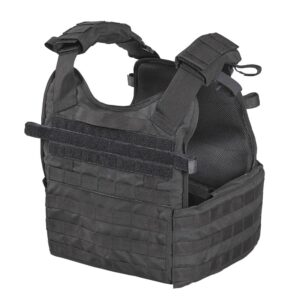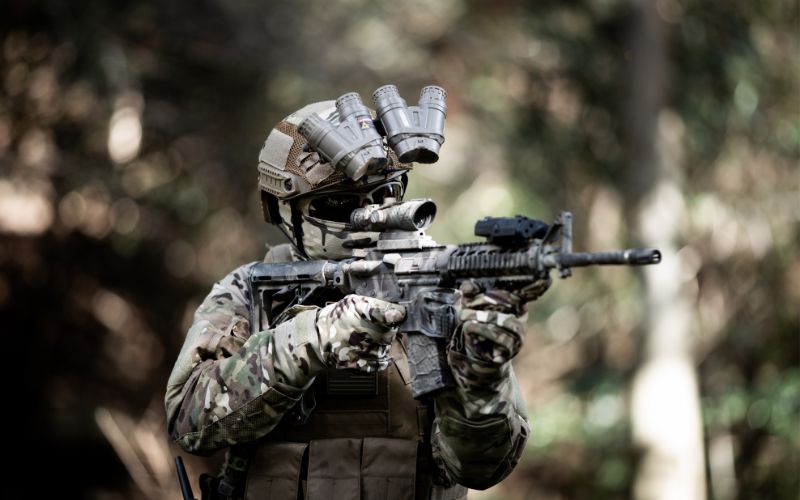Choosing the Best Plate Carrier Accessories for Missions

A plate carrier is important tactical equipment that offers a lot of versatility. Choose the right accessories based on your mission needs to maximize your tool’s use. Whether you’re going on a military mission, a law enforcement task, or an outdoor adventure, selecting the right gear is essential. All these will help them become better performers and be well-equipped with the right accessories for any situation. Here are some of the most critical accessories for plate carriers to help you make the best choices for your needs.
Understanding Plate Carrier Accessories
Plate carrier accessories help you use your plate carrier more effectively. They provide the tools and gear you need to complete your mission.
Some may include pouches for ammunition, medical kits, hydration systems, etc. Proper accessories achieve efficiency, overall safety, and effectiveness in missions.

Must-have Plate Carrier Accessories
Equipping your plate carrier with the right accessories maximizes its functionality and effectiveness. Whether preparing for tactical operations, outdoor adventures, or personal defense, adding carefully selected gear can enhance your loadout’s versatility and convenience. From storage solutions to protective enhancements, the following sections break down key accessories that ensure you’re ready for any situation.
1. Pouches
The most important add-ons for a plate carrier are pouches. They come in different shapes and sizes, so you can customize your configuration to fit your needs. Ammunition pouches carry extra magazines, and utility pouches can have many tools, flashlights, or snacks for extended missions.
When choosing pouches, consider the types of magazines you will carry and whether they are compatible. Consider pouches made from rugged, weather-resistant materials to withstand the rigors of your environment. The attachment system is also important: MOLLE (Modular Lightweight Load-carrying Equipment) is a very popular attachment system that offers secure attachment and easy reconfiguration.
2. Hydration Systems
Staying hydrated is essential during mission operations, especially when tensions are high. A hydration system can be a critical add-on to your plate carrier. Hydration bladders or water bottles that allow you to attach them at any point on your carrier ensure you have access to water without compromising mobility.
When choosing a hydration system, select one that meets your hydration needs. A smaller bladder may be enough for a small mission, but a large capacity will help you remain hydrated for longer operations. Consider a hydration system that is easy to fill and clean since maintaining hygiene is essential in any operational context.
3. Medical Kits

The most important thing you’ll ever carry is a medical kit for any mission. You never know when you’ll get hurt, and having one with you can be a lifesaver in emergencies. Most medical pouches are designed to attach to your plate carrier, allowing you to carry the most basic first aid kits.
A medical kit should contain the basic supplies: bandages, antiseptic wipes, tourniquets, and any personal medications you may require.
The size of the pouch is also a factor. It must be large enough to accommodate all needs but small enough for mobility. Education in first aid basics is equally important. Knowing how to use the supplies in your kit can save lives.
4. Communication Gear

Clear communication can be the answer to almost any tactical situation. However, this only makes place for communication accessories in action. Headsets and radios-which are very significant when it comes to plate carriers-can be set up or integrated into the general settings of your tactical vest.
The selection of communication gear should consider the range needed and the environment in which it will be operated. A noise-canceling headset will be beneficial in loud environments, while a lightweight and low-profile option will serve well for stealth missions. The communication devices must also be compatible with existing gear and easily accessible when worn on the plate carrier.
5. Tools and Tactical Gear

Depending on the nature of your mission, you would need specific tools or tactical gear. This would run the gamut from multi-tools to knives, flashlights, and breaching equipment. Accessories like tool pouches or holsters can easily be attached to your plate carrier for easy access to these essential items.
When selecting tactical tools, consider their weight and size. You want to ensure they’re functional without adding unnecessary bulk to your setup. Choose multi-purpose tools, as this could help reduce the overall load you’ll be carrying.
How To Choose Plate Carrier Accessories
Selecting the right plate carrier accessories involves balancing functionality, comfort, and mission requirements. Start by identifying the operational needs, such as protection level, gear storage, and mobility. A well-configured plate carrier ensures you are prepared without overloading yourself.
1. Understand Your Mission Requirements
Every mission is unique in its requirements for your loadout. Analyze the threat level, duration, and environmental conditions to choose accessories that fit the mission. A more accurate setup is likely based on operational terrain, weather, and engagement intensity.
2. Focus On Essential Gear
Focus on must-haves such as an ammunition pouch, a medical kit (IFAK), and communication tools. Please place them in a position that makes them easy to access. Do not overpack the carrier to ensure that all critical items are easily accessed in an emergency.
3. Check Comfort and Mobility
Distribute the weight to avoid straining and ensure the carrier doesn’t hinder movement. Padded shoulder straps and ergonomic designs for extended missions are also advisable. It should be adjustable to perform tasks like aiming or crouching without hindrance.
4. Adapt for Different Scenarios
Select accessories appropriate to the operating environment, whether urban, rural, or clandestine. Hydration systems, map pouches, and breaching tools will differ based on the mission. Tailor your loadout to maximize efficiency while minimizing unnecessary weight.
5. Select Modular, Compatible Accessories
Select MOLLE-compatible gear to have flexibility when arranging your loadout. Modular systems allow for quick adjustments as mission requirements change. This compatibility ensures adding or removing items without a completely new setup.
6. Include Additional Protective Gear
Add side armor and neck or groin protection to enhance safety in high-threat situations. These features can be attached when needed. Consider balancing protection with mobility to avoid compromising your ability to maneuver.
7. Test and Adjust Your Setup
Field-test your configuration to ensure everything is accessible and doesn’t interfere with movement or equipment operation. Make adjustments based on performance. Continuous refinement ensures your carrier is optimized for real-world scenarios.
8. Invest in Durable Equipment
Choose high-quality materials like Cordura for durability and weather resistance. Trusted brands ensure your gear performs under challenging conditions, and durability reduces the risk of gear failure during critical moments.
Conclusion
Selecting the right plate carrier accessories will be important in preparing for any mission. Through your needs, analysis of the environment, and placing comfort first, you will develop a personalized configuration that can better your performance and safety.
All the pouches, hydration systems, medical kits, communication equipment, and even tools contribute to a success that can be assured to be complete.
Be deliberate when you pick your gear, and remember that testing and fine-tuning are as necessary as the initial selection. Good gear lets you focus more on the mission because you are well-prepared for any challenge.
Frequently Asked Questions
Can I customize my plate carrier accessories?
Yes, modularity is one of the main benefits of plate carriers. Because they offer many choices in pouches and attachments, they can be tailored to what you need and like.
What kinds of tools should I carry on my plate carrier?
The types of tools you carry will depend on the nature of your mission. Standard options include multi-tools, knives, flashlights, and other tactical gear.
What should I put in a medical kit for my plate carrier?
A medical kit should contain basic first-aid supplies such as bandages, antiseptic wipes, tourniquets, and personal medications.
